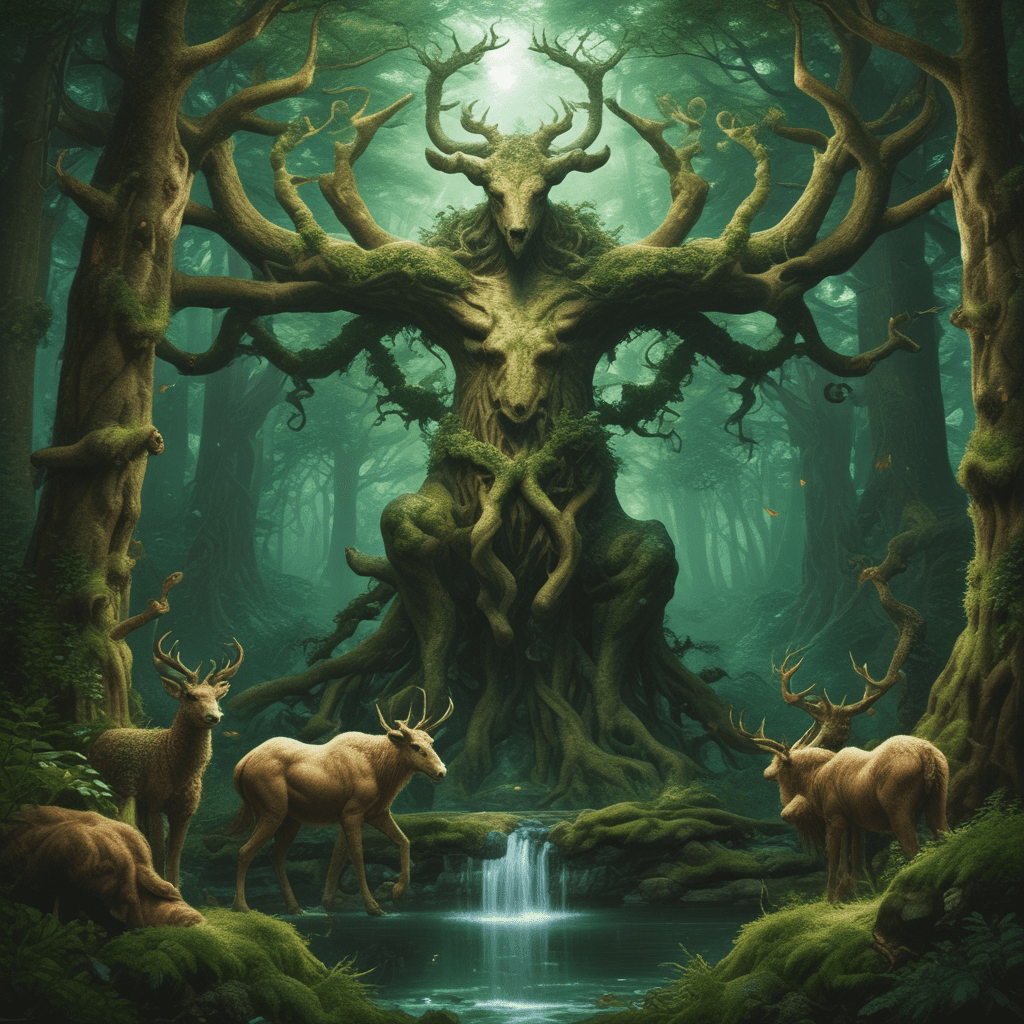The Most Compelling Myths About the End of Days: An In-Depth Exploration
I. Introduction
The term “End of Days” refers to various eschatological beliefs concerning the eventual destruction or transformation of the world, a concept that holds significant resonance across many cultures and religions. These beliefs often evoke deep emotional responses and shape societal behavior, reflecting humanity’s profound concern about its future.
Apocalyptic myths have been prevalent throughout human history, serving as cautionary tales, moral lessons, or reflections of societal anxieties. From ancient prophecies to modern interpretations, these narratives resonate with a wide audience, illustrating our collective fear of the unknown and the end of civilization as we know it.
This article aims to explore the historical context, religious influences, and cultural representations of end-time myths, while also analyzing the psychological factors that contribute to the persistence of these beliefs. By examining the most enduring myths surrounding the End of Days, we can gain a deeper understanding of their impact on human behavior and societal structures.
II. Historical Context of Apocalyptic Beliefs
A. Ancient civilizations and their end-time prophecies
Many ancient civilizations had their own interpretations of apocalyptic events. For instance:
- The Sumerians believed in a cyclical destruction and rebirth of the world.
- The Norse mythology spoke of Ragnarok, a series of events including a great battle leading to the death of gods and the rebirth of the world.
- The ancient Maya had intricate calendars that suggested cyclical time, leading to modern misinterpretations of an impending apocalypse.
B. Religious texts and their interpretations of the end times
Religious texts often contain prophecies about the end of days. For example:
- The Christian Bible’s Book of Revelation describes a final battle between good and evil, complete with vivid imagery of plagues and judgment.
- The Quran speaks of the Day of Judgment, where individuals are held accountable for their deeds.
- The Bhagavad Gita discusses the cyclical nature of the universe, including periods of destruction and renewal.
C. The role of societal fears and events in shaping these myths
Apocalyptic beliefs often arise in response to societal fears, such as wars, plagues, and natural disasters. Historical events, such as the Black Death or World War II, have spurred apocalyptic thinking as communities grappled with existential crises.
III. The Role of Religion in End Times Myths
A. Judeo-Christian apocalyptic narratives
The Judeo-Christian tradition features prominent apocalyptic narratives, including the concept of the Rapture, the Second Coming of Christ, and the final judgment. These beliefs have shaped Western thought and influenced various cultural expressions.
B. Eastern philosophies and their views on endings and rebirth
Eastern philosophies, such as Buddhism and Hinduism, emphasize cycles of life, death, and rebirth rather than a singular end. The concept of ‘Karma’ suggests that actions in this life affect future existences, reflecting a different approach to the idea of endings.
C. Indigenous beliefs and their interpretations of the world’s end
Many Indigenous cultures have their own end-time myths that often involve a return to harmony with nature. These narratives typically reflect a deep connection to the land and the belief that humanity must live in balance with the Earth.
IV. The Impact of Technology on Apocalyptic Myths
A. The rise of nuclear fears in the 20th century
The advent of nuclear technology in the 20th century introduced new fears of annihilation. The Cold War era was marked by anxiety over nuclear war, giving rise to apocalyptic narratives in popular culture, including films and literature that explored the consequences of nuclear fallout.
B. Climate change and its apocalyptic interpretations
In contemporary society, climate change has become a focal point of apocalyptic fears. Many interpret the changing climate as a prelude to an impending disaster, leading to discussions about sustainability, environmental justice, and the potential for societal collapse.
C. The digital age and the proliferation of doomsday theories
The internet has accelerated the spread of doomsday theories and apocalyptic narratives. Social media platforms allow for the rapid dissemination of information, including conspiracy theories and predictions about the end of the world, often leading to widespread panic or mobilization.
V. Cultural Representations of the End of Days
A. Apocalyptic themes in literature and film
Apocalyptic themes have been explored extensively in literature and film. Notable examples include:
- The novel “The Road” by Cormac McCarthy depicts a post-apocalyptic world where survival is a daily struggle.
- Movies like “Mad Max” and “Children of Men” explore dystopian futures shaped by catastrophic events.
- Television series such as “The Walking Dead” delve into human relationships and moral dilemmas in a world overrun by zombies.
B. The influence of art and music on public perception of the end times
Art and music also play crucial roles in shaping perceptions of the end times. From paintings of destruction to songs that evoke feelings of despair or hope, these creative expressions resonate with the collective psyche and reflect societal fears.
C. The role of social media in spreading apocalyptic narratives
Social media has become a powerful tool for spreading apocalyptic narratives. Viral posts, memes, and videos contribute to the normalization of end-time discussions, often blurring the lines between fact and fiction.
VI. Psychological Underpinnings of End Times Beliefs
A. Fear of the unknown and existential dread
The fear of the unknown is a significant driver behind apocalyptic beliefs. The uncertainty of the future can lead to anxiety and a desire for reassurance, making end-time narratives appealing as they offer a framework to understand chaos.
B. Group identity and the appeal of apocalyptic movements
Apocalyptic movements often foster a strong sense of community and belonging. Individuals may find identity and purpose within these groups, which can be particularly appealing during times of social upheaval.
C. Cognitive biases that fuel belief in end times scenarios
Cognitive biases, such as confirmation bias and availability heuristic, can exacerbate beliefs in apocalyptic scenarios. People may selectively focus on information that supports their fears, reinforcing their beliefs.
VII. The Most Enduring Myths About the End of Days
A. The Rapture and its interpretations
The Rapture is a widely discussed concept in Christian eschatology, suggesting that believers will be taken to heaven before a period of tribulation. Different interpretations exist, leading to varied beliefs about its timing and implications.
B. The Mayan calendar and the 2012 phenomenon
The interpretation of the Mayan calendar predicting an apocalypse in 2012 captivated global attention. Although scholars debunked the idea, it highlighted how ancient prophecies can be misinterpreted in modern contexts.
C. The rise of zombies and other modern apocalyptic archetypes
The zombie archetype has become a modern symbol of apocalypse, representing societal fears of loss of control and the breakdown of civilization. This motif is prevalent in various forms of media and reflects contemporary anxieties.
VIII. The Human Response to Apocalyptic Predictions
A. Preparation and survivalism: the rise of doomsday prepping
The rise of doomsday prepping reflects a tangible human response to apocalyptic predictions. Individuals and families prepare for potential disasters by stockpiling supplies, learning survival skills, and forming communities focused on resilience.
B. Community building and resilience in the face of predicted doom
In contrast to fear-driven responses, many communities engage in resilience-building activities. These efforts focus on sustainability, cooperation, and preparedness, fostering a sense of agency in the face of uncertainty.
C. The impact on mental health and societal behavior
Belief in apocalyptic predictions can have significant effects on mental health, including anxiety and depression. Societal behavior may also shift, with individuals becoming more isolated or, alternatively, more engaged in community efforts.
IX. Debunking Common End Time Myths
A. Scientific perspectives on apocalyptic predictions
Scientific inquiry often challenges apocalyptic predictions. Understanding natural phenomena, climate patterns, and human behavior can dispel myths that are rooted in fear rather than fact.
B. Historical inaccuracies and misinterpretations
Many apocalyptic beliefs are based on historical inaccuracies or misinterpretations of texts and events. A critical examination of these narratives reveals their often tenuous connections to reality.
C. Critical



